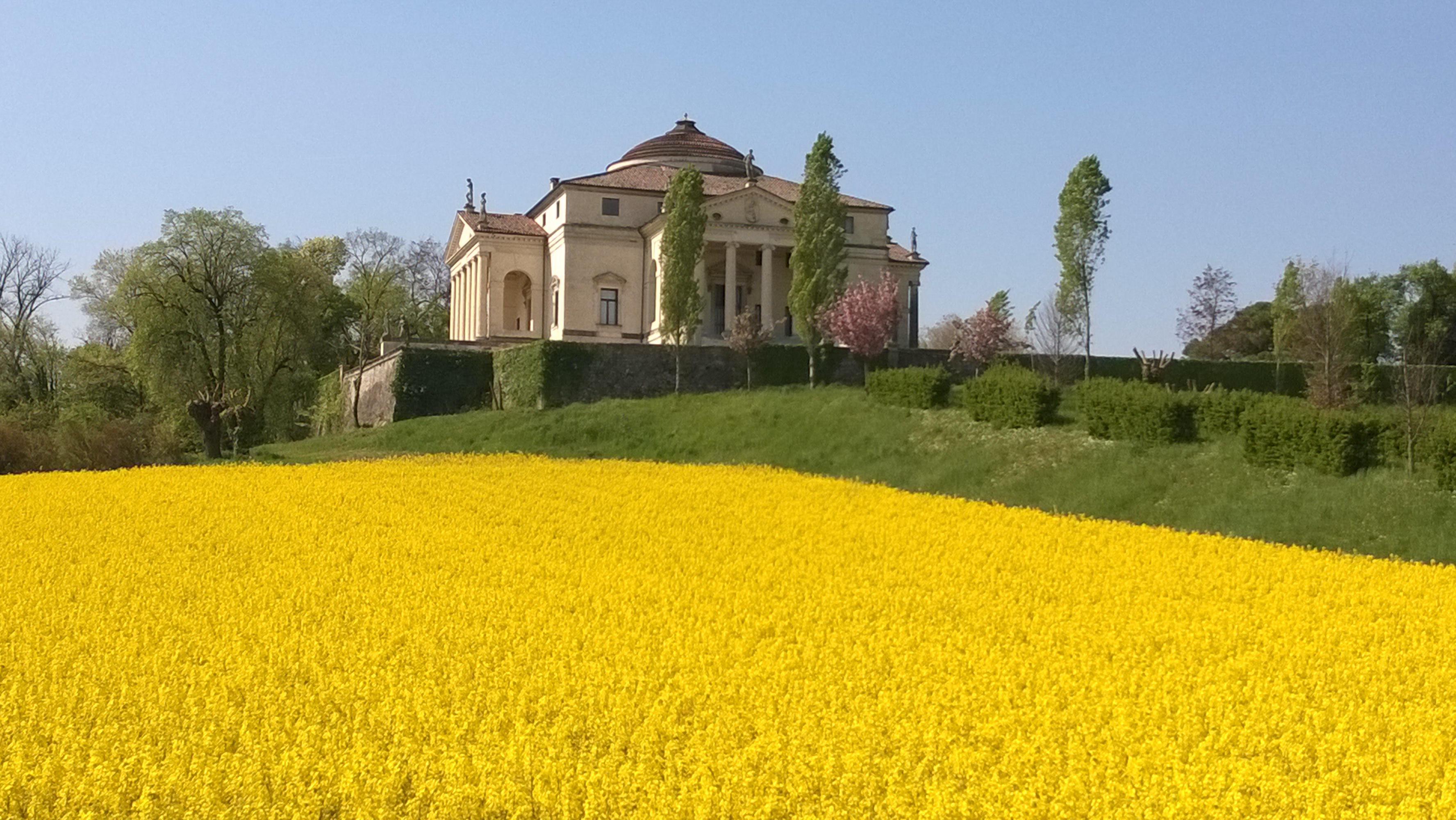Since November, Italy has been divided into three zones: yellow (safer), orange (medium risk) and red (high risk). Gialla, arancione e rossa. For us, Italy has always been united by its colours. Now it is divided into categories of risk from Covid-19. The colours have new significance for many but the colours of Italy are still as they are in our memory.
In Italy colours lift our mood. Yellow – Gialla – is the soft yellow wash across the Umbrian hills at sunset; the yellow sunflowers whose heads turn, and faces follow the sun in Summer – l’estate. The yellow stucco on tall houses in ancient villages; always painted the same shade; always painted with stiff wide brushes by the men from the neighbouring houses. Yellow is the field of canola flowers blanketing the hillside in front of Palladio’s Rotonda. Lemons waiting to be turned into Limoncello in Amalfi. Yellow pottery jugs on the walls in Orvietto. The flash of a yellow Ferrari. Most people associate red as the original Ferrari colour. However, the original colour was yellow. Ferrari’s founder, Enzo Ferrari, was from the city of Modena and yellow was the colour of the city and hence the original Ferrari colour as well. Yellow, now with the new categories, is the one which means ‘safer’ – pretty removed from the thrill of a yellow Ferrari negotiating the cobble-stoned streets of Modena.
Italy’s red now signifies High Risk. Italy is always high risk. Thrilling, Tempting, Fun. Delicious. The red leather Gucci handbag in a Florence shop window; rich red pasta sauce in Roma, smooth red tomatoes sliced by nonna or zia preparing il pranzo for the family. A flash of red poppy on the commander’s hat at the National Day Parade. The vivid Red pom-pom on the hat of the Alpini, Italy’s mountain regiment. Or the red cassocks of the choir at Christmas. Red marble columns in cathedrals; cool red marble floors under your feet in buildings of Venice. Red grapes, heavy and full of promise. And then red wine! Chianti. Barolo. Amarone. Delightfully dangerous.
These are the colours of the seasons – summer and autumn, winter and spring. Orange leaves, variegated and rusty, carpet the pathways on the mountainside outside Belluno in early autumn, covering the precious funghi mushrooms, hiding them from our keen eyes. Orange villas in Tuscany. Orange shutters on the fishermen’s houses in Burano. There’s even a Carnival of Oranges held in Ivrea, near Turin, every year starting on Sunday and finishing on Shrove Tuesday. It’s Italy’s largest food fight that sees hundreds of oranges thrown through streets and piazzas to celebrate freedom and self-rule. The most brilliant orange is in the Aperol, spritzed with prosecco and dazzling through ice. It’s everywhere, summer and winter; its fizz is the sound of daily life. At every hour, in every piazza, in every town. Its colourful sparkle keeps people connected and lifts the spirits.
Italy is yellow – it is vibrant, energetic and happy. Italy is red – it’s dangerous, romantic and beautiful. Italy is orange – daring and energetic. It always will be – and we will be back to experience it all over again.
